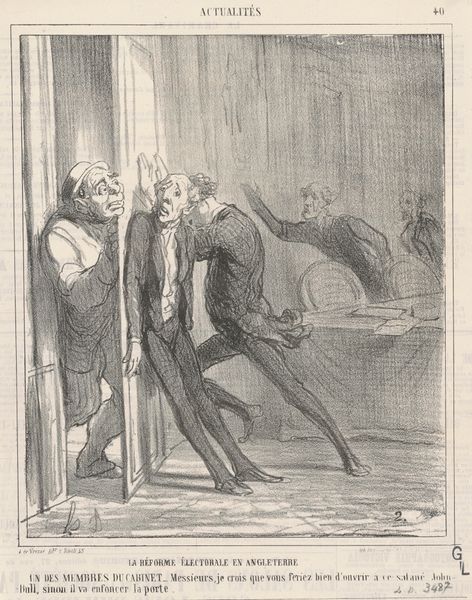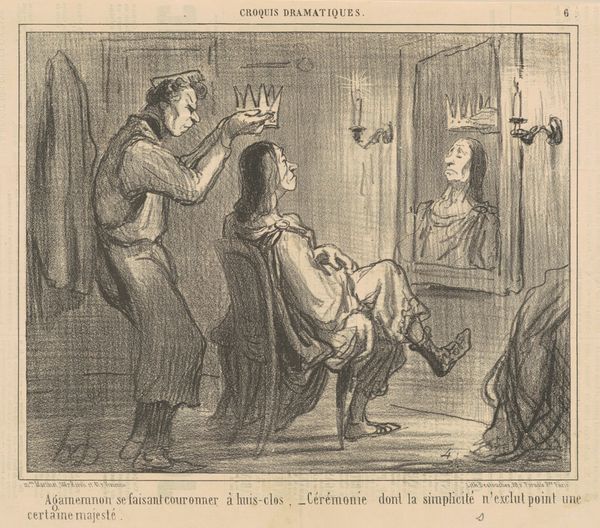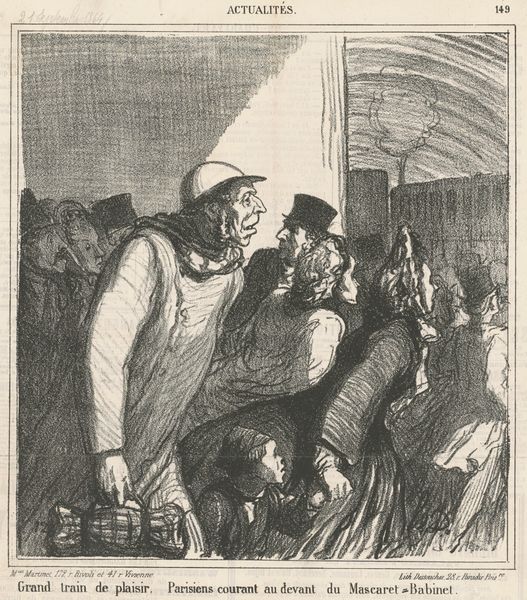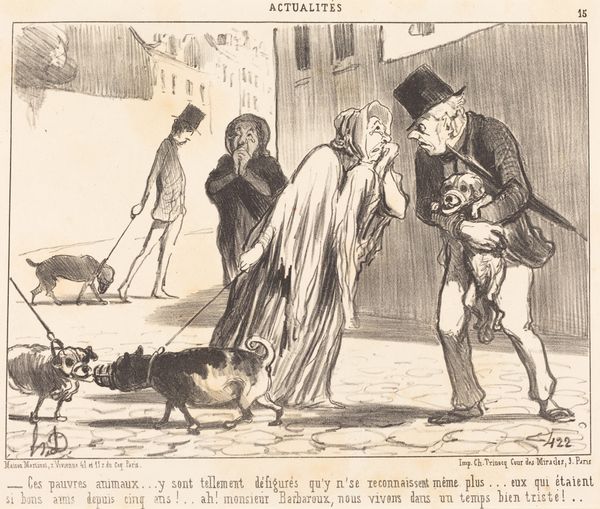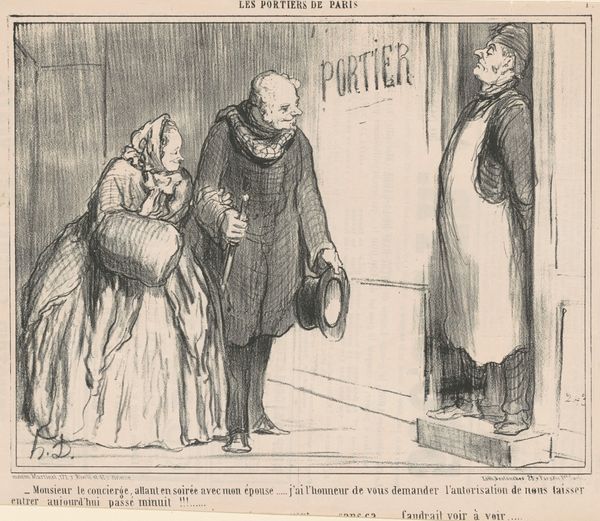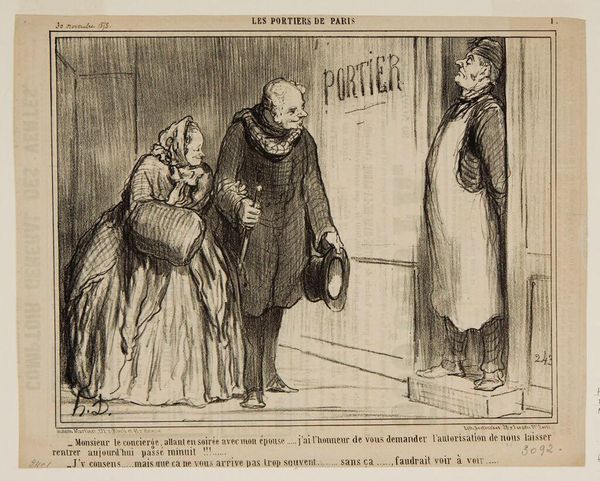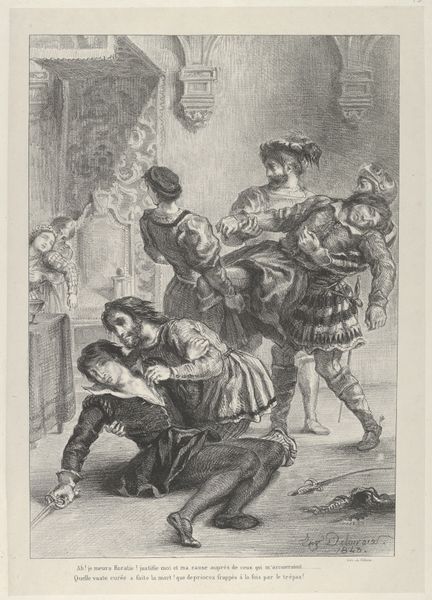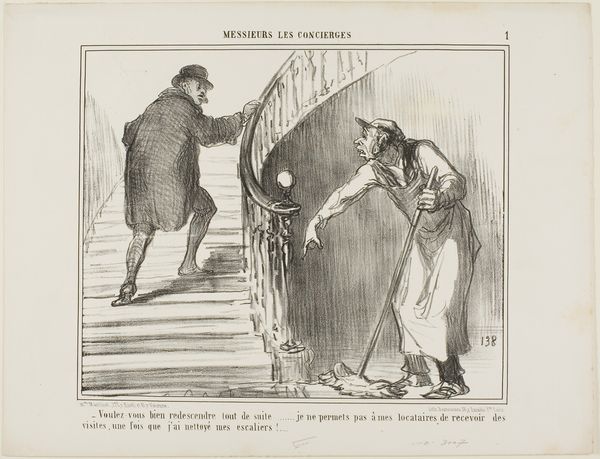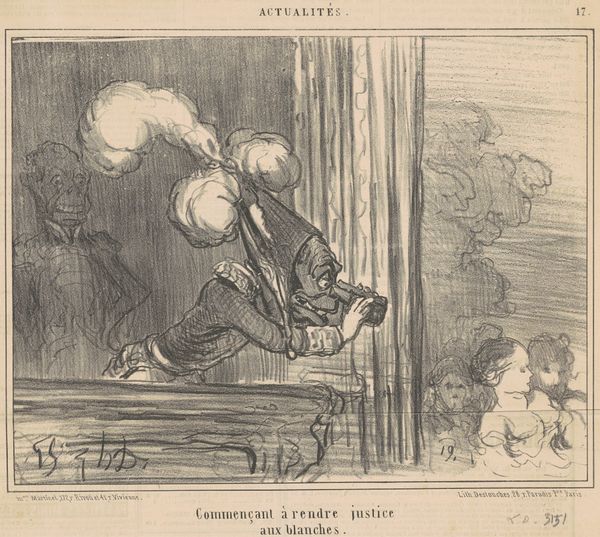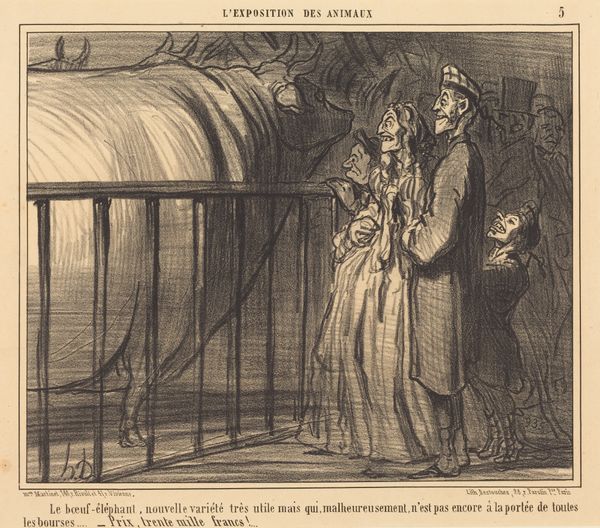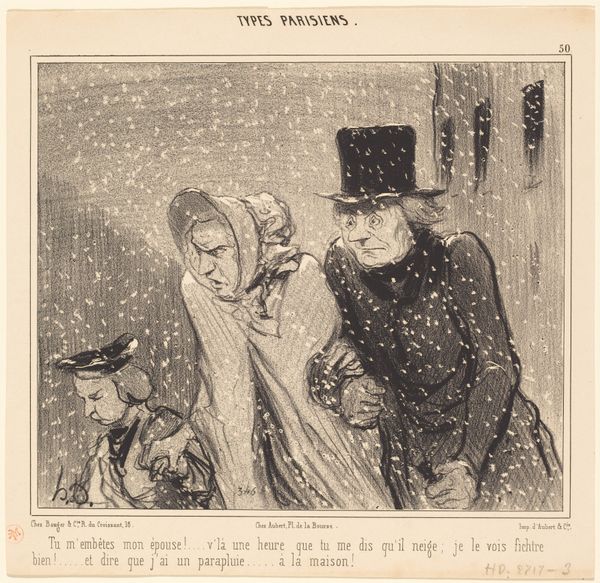
lithograph, print
#
lithograph
# print
#
caricature
#
figuration
#
romanticism
#
genre-painting
Copyright: National Gallery of Art: CC0 1.0
Curator: Honoré Daumier's lithograph, "Dernier conseil des ex-ministres," thought to be from sometime in the 19th century, depicts... well, utter pandemonium! Editor: Yes! Chaos is the word! My initial impression is one of dramatic turmoil—a bunch of suited figures entangled in a scuffle. A frenzy. And this...angelic woman, watching over all of this. Is she justice? Curator: She is certainly *an* idea of justice. I think Daumier wanted to comment on how the ideal of justice always enters the political scene too late: Justice arrives after the fight begins. You know, it is titled "The Last Meeting of the Former Ministers", so likely right before a changing of power. He often uses a satirical or sardonic humor with social themes. Editor: The frenzy seems really interesting in terms of symbols... this type of turmoil can mirror real socio-political tensions or internal power struggles, so this might even comment on how unstable authority can be or how easily it descends into turmoil and savagery? Is that Daumier’s feeling, or am I pushing this too far? Curator: It is definitely open to that interpretation! In addition to his satire, I find the Romantic style of this lithograph really captivating—so full of energetic strokes and emotive figures, capturing this moment of crisis. I think he saw something innately ridiculous but also terribly dark. Editor: Romanticism absolutely underscores the depth of passion and the strong emotions. But, back to the woman, there is an ideal of virtuous serenity against earthly concerns or the messiness and struggle, don't you think? Or, that she symbolizes "France" and is abandoning them because they screwed up. I love the stark contrast with those ex-ministers falling apart over, what looks like, papers and power. It has lasting themes! Curator: It’s that visual juxtaposition, isn’t it? To summarize it, maybe Daumier presents political endings not as a peaceful transition, but as a moment of disarray, highlighting themes of fleeting power. The justice figure there watches on as a sobering counterpoint to human folly. Editor: Precisely, yes. I will never look at government transition the same way, thanks to Daumier’s wild take. The romanticism lends real weight to his critique of political culture, a beautiful lithograph and really makes you ponder at a different time.
Comments
No comments
Be the first to comment and join the conversation on the ultimate creative platform.
